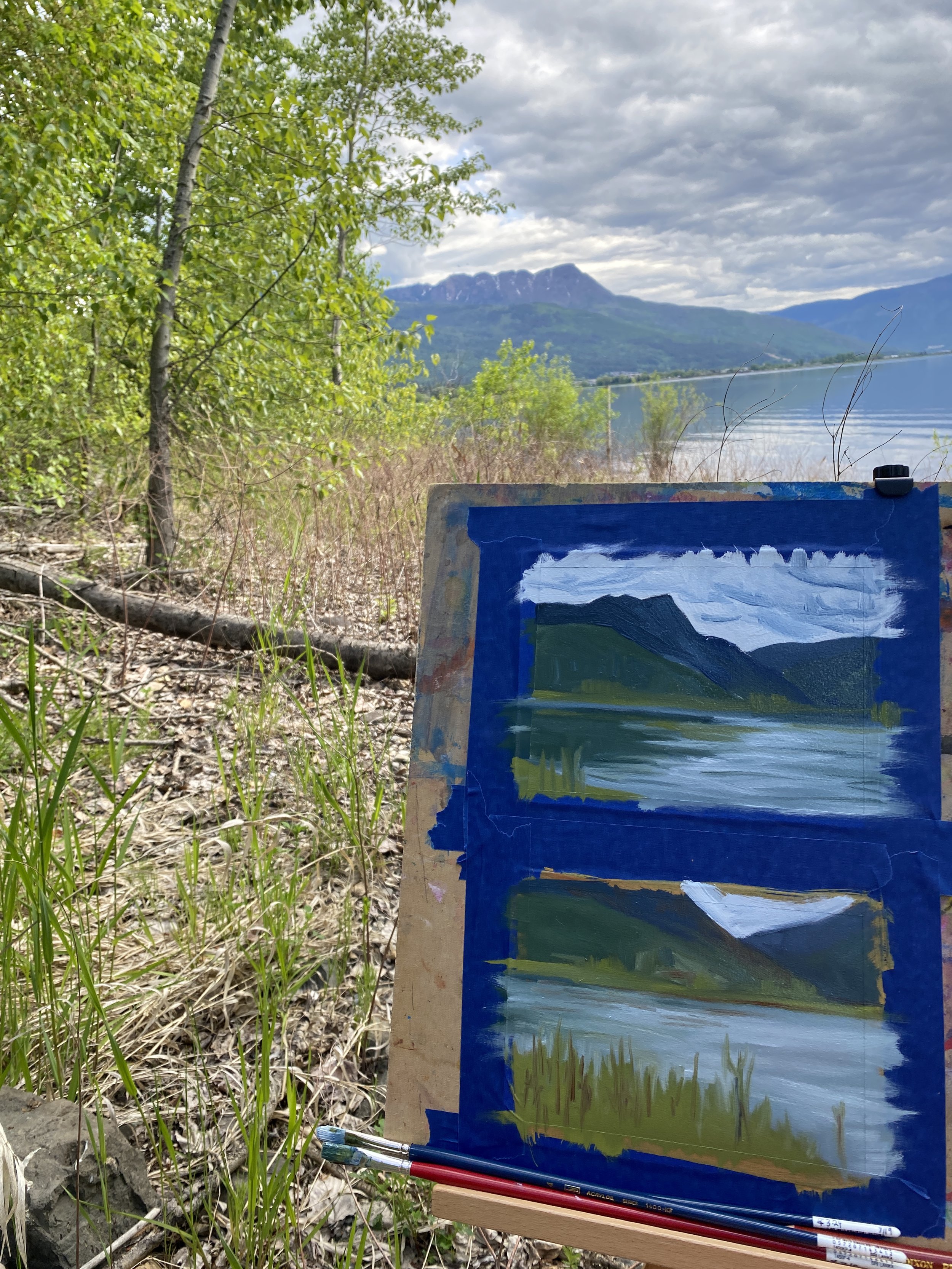Connecting Art with Nature
The difficult task of the artist is to make work with an emotional impact to cut through the noise of data.
John Stott on Creation Care
I would like to share more about the Pollinators exhibit which is currently on exhibit until July 2 at the Salmon Arm Arts Centre. This has been another exciting show to be a part of, not only because there are so many interesting works of art, but also because it marries two of my favourite things: art and science.
Turns out many of the artists did substantial research while completing their pieces. During the afternoon of the Artists’ Talk, I learned about the patterns of butterfly wings, that moths are the night shift pollinators, that there are 500 species of bees in British Columbia, and also about the harmful effects of insecticides used in canola seeds. And that was just from 4 of the 15 artists represented.
Honeybee Flight Paths III 24 x 24 mixed media on canvas
available at Salmon Arm Arts Centre
My own mixed media paintings are based on the flight patterns of honeybees as they forage to and from their hives. I read reports on how scientists affixed transmitters to the backs of honeybees to determine how they orient themselves in the landscape and what factors affect their homing abilities.
These incredible creatures demonstrate exceptional abilities to learn and communicate. Honeybees can find their way back to the hive using all kinds of navigation strategies including recognizing the edge of a forest or road, river or other prominent feature in their landscape.
From the article Guidance of Navigating Honeybees by Learned Elongated Ground Structures published on Frontiers in Behavioural Science.
The above diagram of plotted flight paths was the inspiration for the following painting.
Honeybee Flight Paths I 24 x 24 mixed media on canvas
available at the Salmon Arm Arts Centre
Even though the lifespan of a single bee may be only 6 weeks in the summer, these tiny, fleeting insects have a profound impact on the ecosystem. A single bee may not seem important, but the generations and generations of hives of bees are incredibly significant. The complexity of layered lines and colour patches in my artwork remind us that over time, the layers of different bee individuals overlap repeatedly to create an indispensable imprint on the survival of all species.
I have some printed card sets of the four Honeybee Flight Paths paintings on 6 x 6 inch cards with envelopes.
For $24, I’d love to mail you a set.
Painting Excursions Workshop in June
“Working with artist quality materials, was the perfect way to stretch my creative wings on a weekend afternoon. Sara offered step by step instruction, and just the right amount of encouragement for a novice painter like myself. Thank-you Sara for a wonderful learning experience.” Sarah Cobbett
Coming up! The Painting Excursions workshop is coming up later this month and there are spaces left if you were considering joining. My friend Sarah and I went out on the trail this weekend to experiment with plein air painting. She had been challenged to do something creative that she’d never done before and enjoyed the process.
I have easels and painting supplies for anyone that wants to join the June 18 workshop. Participants just need to bring a hat, backpack, and snack.
We’ll meet at my studio to collect supplies, learn a bit about colour mixing and tones, composition, and trusting our senses in the natural world. Anyone can do this, whether you’re an experienced or beginner artist. It’s just a short easy walk to beauty in our locale.
Plein Air painting is a great way to combine art with another of my favourite things, getting outdoors.



